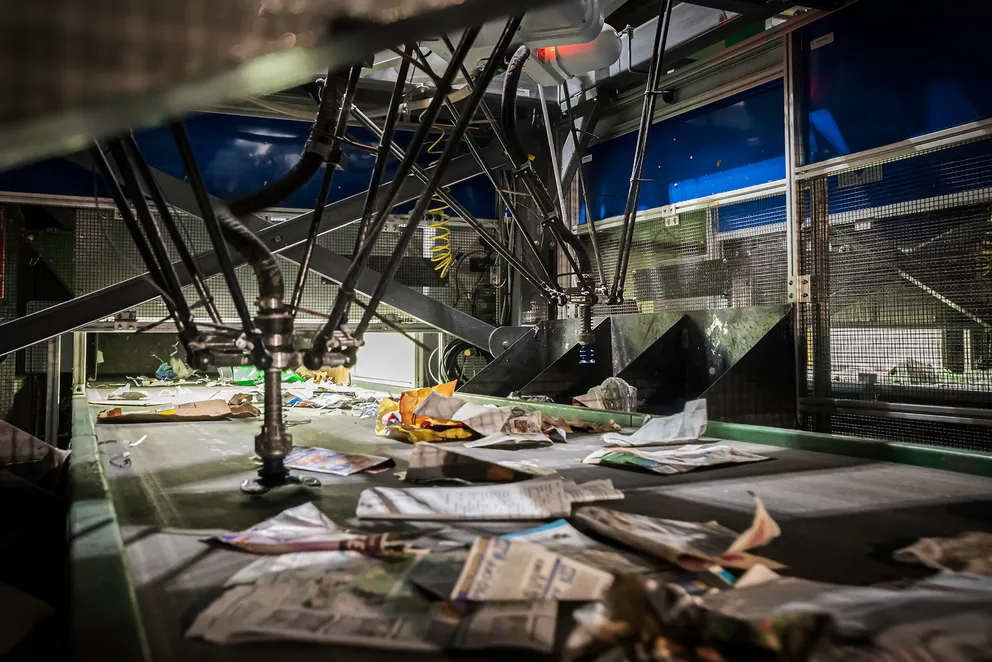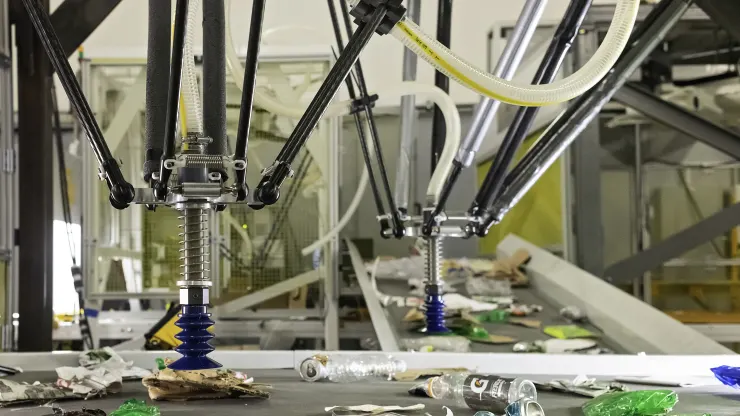We’ve all been recycling, reusing, and repurposing to help the environment. Companies are recovering from the COVID-19 pandemic restrictions by renovating their office area to accommodate the now-former work-from-home team members. And in the materials recovery facilities that must deal with the trash—sorry, the recyclables that end up in their domain, a new crew member is making an appearance: AI (artificial intelligence)-powered robotics.
AMP Robotics Corp., a pioneer in AI, robotics, and infrastructure for the waste and recycling industry, is developing an AI-powered automation solution to improve recovery of film and flexible packaging, the first-of-its-kind to tackle the persistent challenge of film contamination. Close to 95 pounds of these materials, including grocery and storage bags, pouches, and wrappers, are found in the average U.S. home each year.
Most recyclable products are well-known: cans, bottles, hard plastic cases, paper of various types, and the most common packaging material, corrugated containers, i.e., boxes. What isn’t supposed to be in the household recycle cart is film and flexible packaging. Only 1% of U.S. households have curbside access for recycling film and flexible packaging today. Instead, these bags and wrappers have special “drop boxes” at grocery stores and other locations but that can seem inconvenient, so they still end up with the co-mingled recyclables.
The recycling industry lacks infrastructure for the identification and separation of film and flexible packaging, and these materials jam recycling equipment not designed to handle it. Even 2-3% of film in overall streams can be unmanageable to remove manually, often damaging equipment, necessitating downtime, and hindering recovery of recyclables. Film and flexible packaging find their way into every line in a materials recovery facility, resulting in high levels of contamination. But most of these materials, given their light weights, make their way onto fiber lines. Film contamination degrades fiber bale purity, leading to revenue loss or the need for additional post-processing downstream.
AMP’s solution, AMP Vortex, is the industry’s first AI-powered automation system for film removal and recovery. AMP’s system targets film contamination and is initially optimized for quality control on fiber lines. Vortex provides the industry with the most flexible and adaptable solution targeting film; it can be deployed as a retrofit solution in various configurations to accommodate different belt sizes and inclines.

AMP is developing Vortex to target and recover film and flexible packaging for baling and selling because these materials are complicated and expensive to reprocess into raw materials, leading end markets for film and flexible packaging to be limited. While flexible packaging has been almost uniformly single-use, major brands continue to make commitments to use more recycled content in their products, and several states have recently adopted laws aimed at ramping up the use of post-consumer resin in plastic products and packaging.
Vortex emerged from AMP’s CIP (customer innovation program), a technology program focused on collaborating with industry stakeholders to develop new AI-enabled automation applications for the recycling industry. Vortex is among a portfolio of new products and performance features AMP is developing for pilot and commercial release in support of increased recycling efficiency and improved cost-effectiveness for material recovery facilities and converters. AMP has started its pre-release of Vortex to the market, actively working with initial customers on deployment. The company expects to be in full production release in 2023.
AMP Vortex joins the company’s other robotic solutions including a sorting system for construction and demolition debris. Improved efficiency and preventing loss of residual material is the intent of the AMP Cortex intelligent robotics system. The experiential learning of the AI platform that powers these robots allows specialization in the identification of discrete materials found in C&D applications. Cortex’s delta-style robots pick and process lighter and smaller objects like wood, metal, drywall, and plastics that gantry-style robots with parallel grippers typically miss.
The C&D materials the AMP Cortex can identify include:
- Fiber
- Copper pipes and tubing
- Gypsum
- UBCs
- Concrete
- Masonry
- Tile
- Wood
- Plastics
Want to tweet about this article? Use hashtags #construction #sustainability #infrastructure #IoT #AI #5G #cloud #edge #futureofwork


